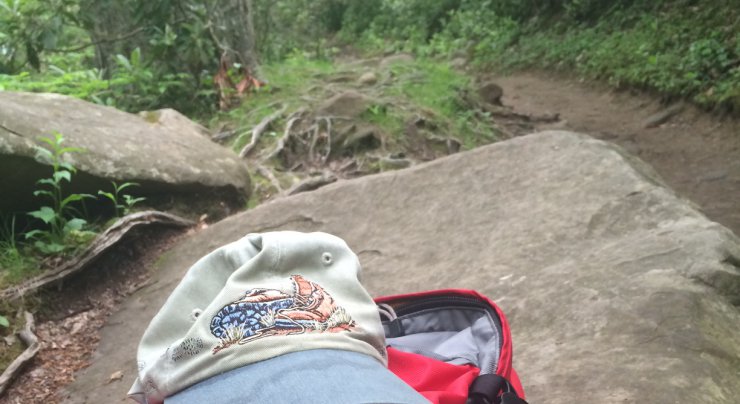
This is the fifth and final installment in “The Business of Hiking” series. The previous four installments focused on business strategies I was reminded of on specific hikes during a recent trip to the Smoky Mountains. This post discusses the more general topic of approaching life’s ups and downs differently. Climbing up a hill is much different than running or walking back down it.
Uphill and downhill are equally challenging
However, going uphill and coming back downhill are both difficult and challenging in their own ways. It’s in the recognition of these differences that we learn a valuable business strategy lesson.
- Uphill is representative of the tough times in business. You need to be slow and methodical; carefully picking your way and conserving your energy or resources.
- Downhill is representative of the good times when sales are flowing in. This is a time to watch your footing because it’s much easier to stumble and fall when the going is easy like it is on the downhill portion of a hike.
More on the uphill
While hiking uphill with a loaded backpack and carefully choosing my footing, I caught myself thinking about how difficult and slow it can be to start a business or to face the equally challenging task of working through a business slowdown or other crisis.
At times like these, you must move slowly and carefully to conserve valuable resources like your time, energy and money. There is, however, an important distinction between moving slowly and procrastinating or being indecisive. When the going is tough in business or hiking, it’s time to make decisions as quickly as you reasonably can and keep moving. The only way to get up the hill or out of the tough times is to keep moving.
More on the downhill
Sometimes when I hit a downhill on a trail I get a little reckless. I start almost running down the hill because it feels so easy and effortless compared to going uphill. What you forget is how hard on your knees and hips the downhill can be (especially for an old guy). You also forget how treacherous a fall can be if you are basically running down the mountain trail. This is comparable to when business is great and the sales are just flowing in. It’s easy to forget to apply an appropriate amount of caution to your plans and actions.
At times like these, slowing things down a bit can be a good idea. In business take a little longer to consider the return on investment of that business trip you can now afford. Would you take that same business trip if you were on an uphill and it would drain the vast majority of your financial resources? If the answer is yes, then the decision is pretty easy – go for it. If you aren’t sure; then this is a good time to put off the decision and consider if the potential return on investment justifies the expense.
Sure I can run back down the trail, but is that worth the risk of a sprained ankle – or worse? How handy could that money be when you hit another rough patch?
Learning to recognize changes in the business terrain
If 20 years in business has taught me one thing, it’s that you have to learn to look for leading and trailing indicators of business cycles. On the hiking trail, you normally know if you are going uphill or downhill. In business it’s not always clear that you’ve entered an uphill cycle until you’re well into it.
For example, I now watch both cash flow and sales separately in my businesses. Yes it’s the actual cash in and expenses out that determine how much we are making today; but it’s the sales that determine how much we will be making in the future. That’s because about 80 percent of our customers pay in somewhere between 15 and 90 days. So we could be in a serious downhill run based upon cash coming in, but at the same time be in an uphill battle with sales that will impact the cash in down the trail a bit.
So now we plan current expenditures for things like business trips, new computers and the like based upon sales – not cash in. We need to know that we’ll continue to have good income 30, 60 and 90 days from now. Basically we become map makers for the trail that is our business. With a decent map, you have a better chance of predicting how far ahead the next uphill or downhill might be.